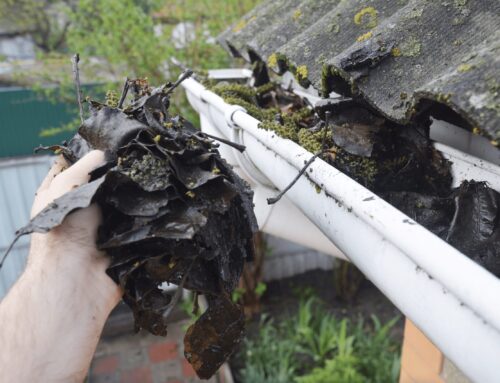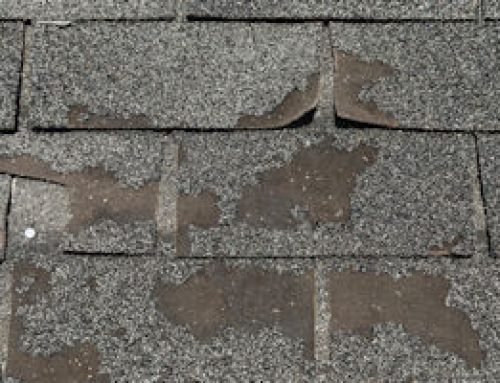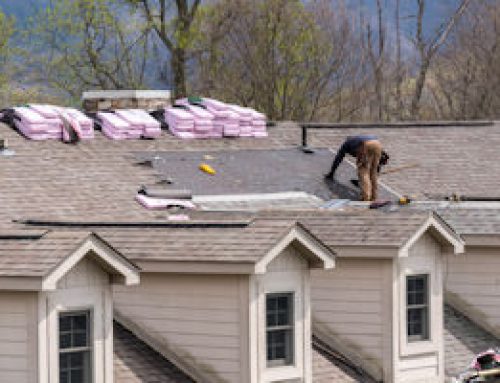Storms: The Leading Culprit Behind Roof Damage Across the US
In the continental United States, storms stand as the primary cause of roof damage. The National Severe Storm Laboratory reports that severe thunderstorms can unleash heavy rain, hail, ice, and winds that exceed 100 mph. Such intense weather conditions can lead to dents or even punctures in roofing materials, causing leaks and other complications. Remarkably, about one-third of homes in the U.S. are highly vulnerable to natural disasters and storm-related damage.
Texas, in particular, faces a high frequency of severe weather incidents, including thunderstorms, hailstorms, tornadoes, and hurricanes, inflicting significant damage on homes and buildings, with roofs often bearing the brunt.
Understanding Hail Damage
Predominantly occurring in spring and fall, hailstorms can be particularly harsh on roofs. The severity of hail damage hinges on the size, density, and point of impact of the hailstones, as well as the construction materials and techniques used for the roof. While slate and metal roofs boast a higher resilience to hail damage, wooden and asphalt shingle roofs are more susceptible.
To gauge the extent of storm damage, it’s crucial to be aware of the following indicators that suggest it’s time to consult with a roofing specialist:
Indications of Hail Damage on Your Roof:
- Loose or Cracked Shingles: Large hailstones can cause asphalt shingles to crack or loosen. Even minor cracks can alter the appearance and functionality of the shingles, while smaller hailstones may bruise the shingles, embedding granules deeper into their surface and making them more vulnerable to future storms.
- Dark or Shiny Spots: The force of hail can strip granules from asphalt shingles, revealing bare spots that may appear darker or shinier from ground level. This exposure accelerates the aging process of the roof and can also result in a softer feel to the shingles due to bruising.
When facing such damages, securing the services of San Antonio’s finest roofing experts is crucial. Hiring the best roofer in San Antonio, Texas, ensures that your roof receives the highest quality repairs, safeguarding your home against future weather challenges. Don’t wait for the damage to worsen-act now to protect your home by partnering with the top roofing professionals in the area.”
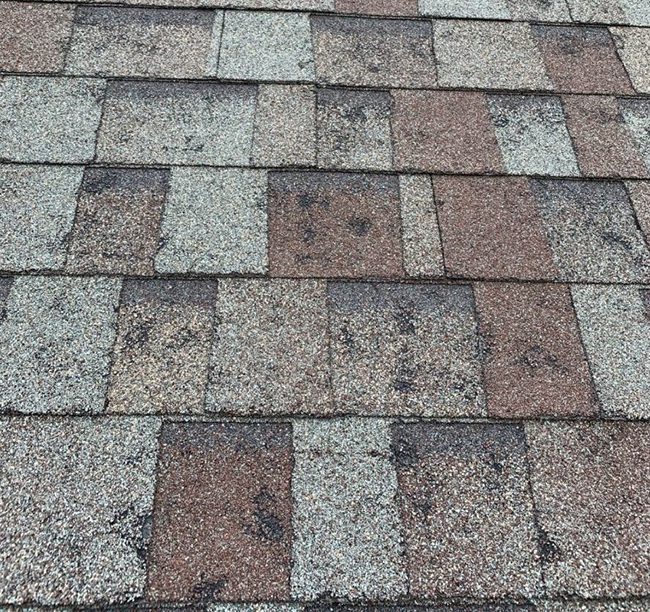
Ensuring Your Roof’s Integrity: Why Hiring the Best Roofing Company in San Antonio, Texas, is Essential
In the aftermath of severe storms, homes in San Antonio, Texas, are frequently left to confront the reality of storm damage. The ferocity of hailstones striking the roof can cause noticeable dents on metal flashing, roof vents, gutters, and downspouts. These elements are crucial for the roof’s overall function and are particularly prone to damage due to their exposure and material composition. Even metal roofing, celebrated for its durability, is not immune to the wrath of nature, with susceptibility varying based on the metal’s thickness and type.
Among the concerns that storms raise is the risk of exposed fiberglass, a situation arising when hail shatters shingles, separating them from the protective fiberglass mat below. This exposure not only signals an immediate risk of leaks but also underscores the urgency for professional inspection and repair to avert significant water damage to your home.
Wind, a less visible but equally destructive force, can wreak havoc on a roof’s structure. The damage it causes, from lifting and loosening shingles to hurling debris and causing punctures, necessitates a keen eye for both the obvious and subtle signs of distress. These signs include missing or loose shingles, curled or lifted roof edges, and the aftermath of tree limbs or other objects impacting the roof.
Rain, while a common and expected element, can exacerbate existing vulnerabilities in a damaged roof, leading to water ingress and further deterioration of roofing materials. The presence of granules in gutters post-storm indicates shingle erosion, a sign of compromised roof integrity.
Facing these challenges, the importance of selecting the best roofing company in San Antonio, Texas, cannot be overstated. A reputable and experienced roofer brings not only the necessary skills for thorough inspection and repair but also offers peace of mind that your home is in capable hands. They ensure that every aspect of storm damage, from dented metal components to the risks posed by wind and rain, is addressed promptly and effectively.
When selecting a roofing contractor, prioritize those with a proven track record of excellence in repairing storm damage. The best roofing company will not only restore your roof to its pre-storm condition but also enhance its resilience against future weather events. This choice is not merely about repair; it’s about investing in the long-term protection and security of your home.
In summary, the aftermath of a storm leaves no room for compromise on quality and expertise. Hiring the best roofer in San Antonio, Texas, is a critical decision for homeowners facing the daunting task of repairing storm damage. It’s a decision that safeguards your home, ensuring it remains a sanctuary against the elements for years to come.
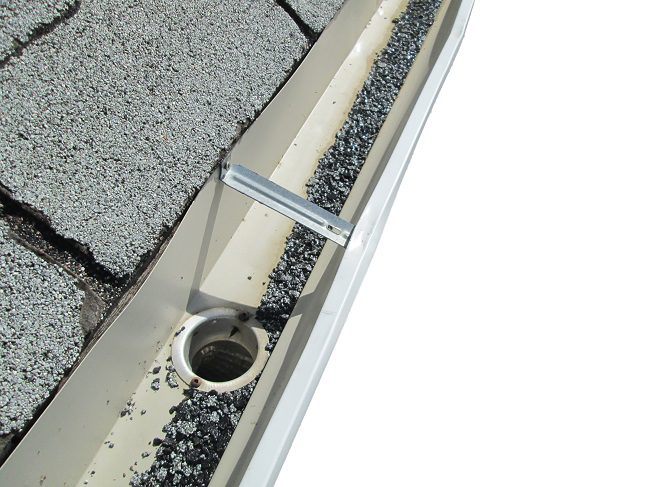
Enhanced Roof Protection: Addressing Water Accumulation and Weather-Related Wear
In regions prone to heavy rainfall, roofs can become unwitting reservoirs for moisture, particularly in eaves or depressions where drainage is less than optimal. Such stagnant water can inflict serious harm on the underlying roofing materials, accelerating wear and potentially leading to breaches in the roof’s defense against the elements.
The presence of cracks and crevices on your roof not only compromises its integrity but also provides fertile ground for mold and mildew to take root. The growth of these organisms can lead to the expansion and deterioration of roofing materials and wood, further inviting infestations of insects and debris that compromise the roof’s structure and aesthetic appeal.
One of the more immediate consequences of storm damage, exacerbated by the cycle of extreme temperature shifts, is a leaking roof. Such vulnerabilities manifest as water spots on ceilings, dampness along interior walls, and an overall compromise of the building’s interior climate control, posing risks to both structure and inhabitant comfort.
The role of gutters and downpipes as critical components of a roof’s drainage system cannot be understated. When these features become obstructed, they redirect water flow back across the roof’s surface, leading to pooling and the eventual degradation of shingles and wooden structures beneath.
While snow and ice are less common adversaries for roofs in San Antonio, Texas, their occasional presence can unveil existing leaks and weaknesses in a roof’s armor against moisture. The weight of accumulated snow, rare yet plausible, can strain and damage the roof’s structure, highlighting the need for proactive snow and ice management strategies.
Recognizing Snow and Ice Damage:
The formation of ice dams is a tell-tale sign of inadequate attic ventilation, allowing ice to build up at the roof’s edge and overflow into gutters. This not only disrupts the roof’s drainage but also exerts undue pressure on shingles, leading to cracks, displacement, and a compromised barrier against water intrusion.
To navigate these challenges, the expertise of San Antonio’s premier roofing companies becomes indispensable. Their skilled assessment and tailored solutions offer homeowners peace of mind and a robust defense against the elements. Opting for the best roofing professionals ensures that your home remains secure, dry, and aesthetically pleasing, regardless of the weather’s whims. In essence, investing in top-tier roofing services is not just about repair; it’s about fortifying your home against future adversities, ensuring longevity and comfort for years to come.
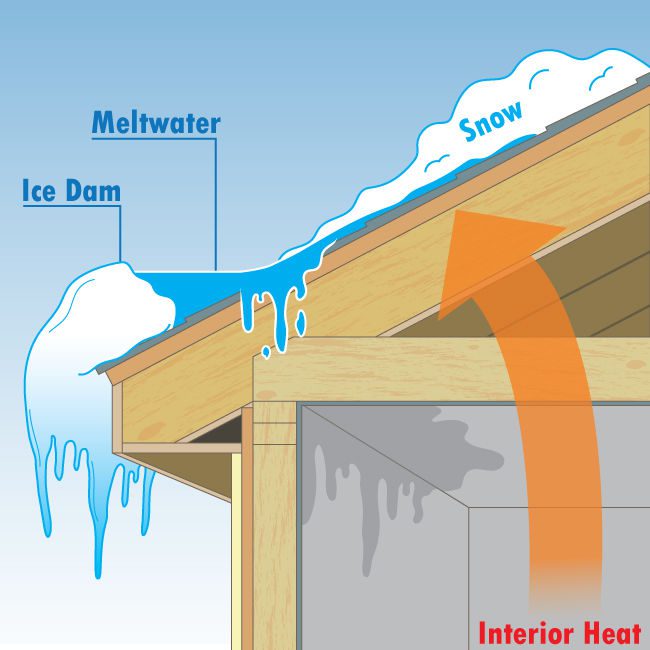
Addressing Snow-Related Roof Challenges: Prevention and Repair Strategies
Even the smallest imperfections in your roofing materials, such as hairline cracks, can become gateways for snow to infiltrate and cause leaks. The introduction of moisture not only risks the immediate leak but can also lead to the melting and soaking of insulation and ceilings, fostering the growth of mold and resulting in significant water damage within your home.
Dealing with Collapsed Gutters and Roof Structures
The dynamic cycle of freezing and thawing associated with extreme temperature fluctuations can exert undue stress on your roofing system. This process can lead to gutter damage, where sections may become detached from the roof, compromising the drainage system and potentially leading to water infiltration and damage to the structure and foundation of your home.
Understanding the Risk of a Sagging Roof Deck and Ceiling Cracks
In Texas, where heavy snowfall is a rare event, homes are often not designed with the structural reinforcements necessary to bear the load of substantial snow accumulation. In the event of a significant snowfall, the added weight can stress the roof, leading to torn shingles, bent supports, and compromised structural integrity, which may manifest as a sagging roof deck or visible cracks in the ceilings.
Mitigating Leaks in Gutters
The melting process of snow and ice on your roof can create a cascading effect, where water flows into the gutters. If temperatures drop and this water refreezes, it can lead to blockages, forcing moisture back onto the roof or trapping water under a layer of ice, damaging roofing materials over time.
Post-Storm Action Plan
Once the storm has passed and conditions are safe, it’s critical to assess your roof for any damage:
- Visual Inspection: Safely examine your roof from the ground for visible signs of damage, such as missing shingles, ice dams, or sagging sections.
- Check the Gutters: Inspect gutters and downspouts for blockages, ice formation, or detachment from the roof.
- Interior Check: Look for any signs of water intrusion inside your home, such as water stains on ceilings or walls, which could indicate a leak.
- Consult a Professional: For a thorough evaluation and to address any issues, contact a reputable roofing company in San Antonio, Texas. Engaging with experts ensures that any damage is professionally assessed and repaired, preventing future leaks and structural issues.
By proactively managing and repairing snow-related damage, you safeguard your home against the elements and maintain its structural integrity and comfort. Enlisting the services of San Antonio’s top roofing professionals is not merely a response to immediate damage but a strategic investment in the resilience and longevity of your home.
How To Protect Your Home from Storm Damage
While storms are unavoidable, you can minimize the amount of impact they have on your roof by:
- Regularly Trim Your Trees
Loosely hanging tree limbs are a recipe for disaster when a storm hits. They can quickly cause damage to your roof and home. Check the trees in your yard to ensure they’re secure and schedule regular trimming to protect your property.
- Seal Your Doors and Windows Properly
A small opening in your windows or doors is enough for strong winds to cause catastrophic storm damage to your roof and the entire home. Ensure your doors and windows are properly sealed.
- Clear Your Gutters
Clearing your gutters keeps gutters free-flowing and the downspouts drain water away from your home’s foundation. Water damage and foundation issues from strong storms can damage your property and devalue your home.
- Check for Loose Fence Posts
Strong winds will blow away anything that’s not secured, including fence posts. To check your fence’s footing and identify loose posts, shake each post strongly. If you have any that can easily wiggle out – make sure you secure them as soon as possible.
- Repair Loose Siding and Replace Missing or Damaged Shingles
Any unrepaired damage can get worse and cause bigger problems. Don’t delay getting roof repair services for your home’s roof. Leaving even small issues unattended can cause more damage later.
- Use Storm-Resistant Materials for Your Roof
Depending on your geographical location and the frequency of storms in your area, you may need to consider upgrading your roof with more storm-resistant materials. Consider selecting materials that are designed for your area and are more resistant to high winds, hail, and rain.
Insurance Coverage for Storm Damage
Storm damage is considered an Act of God and thus liable for compensation under most homeowner’s insurance policies.
However, failing to file claims on time or poor documentation can make you ineligible for coverage, and increase your premium rate for subsequent disasters.
For your insurance to cover roof damage, the amount payable depends on:
- the extent of your damage
- the age and structure of the building
- your premiums and deductibles
- property values in your neighborhood
Let Prime Seamless Protect Your Home From Storm Damage
If you suspect that your roof has been damaged in a storm, it is important to have it inspected by a professional roofing contractor as soon as possible. They can assess the extent of the damage, provide recommendations for repairs or replacement, and even work with your insurance company to file a claim and settle payment options.
If you are concerned about past storm damage, or want to protect your roof from future storms, give us a call.
Prime Seamless is an expert in residential roofing to keep you and your family protected when it matters most.

